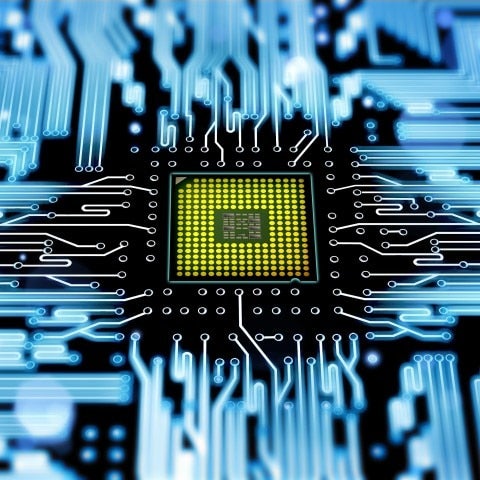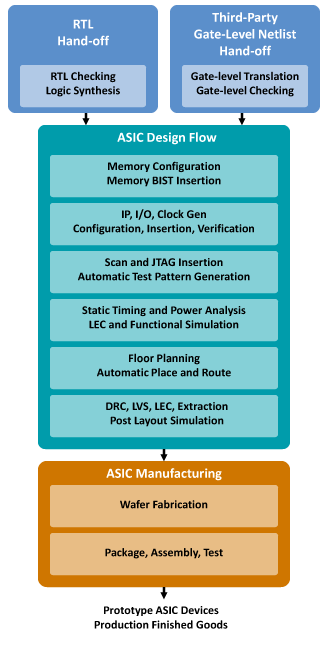Why should you convert your design from a field programmable gate array (FPGA) to an application specific integrated circuit (ASIC)?
Well, there are many reasons to take an FPGA design and convert it to an ASIC solution. An ASIC can provide lower cost, lower power, smaller size and increased security compared to an FPGA. In addition, an ASIC from ON Semiconductor provides increased longevity and security in the supply chain with ON Semiconductor factories.
Lower cost
Of course, the most obvious reason to convert from FPGA to ASIC is the significantly lower cost per piece. The trade-off is the non-recurring engineering (NRE) cost encountered in developing the ASIC, however, we offer competitive pricing and products, ensuring that we best serve our customers. In today’s semiconductor environment, we are seeing price increases and specifically, a 10 percent increase in cost for FPGAs, which is higher than the increase for ASIC, making it the cheaper option. In addition, ASIC can be custom designed, often resulting in a smaller product (silicon and package), which leads to a smaller printed circuit board and lower overall system costs.
ASIC efficiency
An ASIC can use between two times to 10X less power than an FPGA. Due to the programmable structure and unused content on an FPGA, they are very inefficient when it comes to power usage. Switching to an ASIC allows the design to be customized in the most efficient way possible and does not include unused functions that an off-the-shelf FPGA might contain. For energy-critical applications, ASICs are proven to be the best solution for power usage, In battery-powered applications, an ASIC solution would allow longer life between battery replacements or recharging versus an FPGA solution.
Supply concerns
Converting to an ASIC could also help alleviate supply concerns. In the current market, semiconductor lead times are growing and supply is tight. Having an ASIC allows you to have your own unique part rather than a standard part that has a limited supply. Longevity matters, and ON Semiconductor operates front-end facilities that have maintained ASIC products for 30+ years at the same location and are not as susceptible to the whims and supply constraints of the global market.
Security
Cybersecurity is a big topic currently and the use of an ASIC can provide a more secure environment for designs compared to an FPGA. An ASIC is not reprogrammable, making it much more difficult to be accessed by hackers wishing to extract information or reconfigure the device. An FPGA is, by nature, is meant to be accessed and reconfigurable, thus opening itself to potential intrusion.
Intellectual Property (IP)
When designing in an FPGA it is important to understand long-term IP needs. Many FPGA vendors make small modifications to standard IP due to their architecture, and licensing agreements may prevent the designer from moving the FPGA vendor-specific IP to an ASIC. If a program will go into volume production, third party or ASIC compatible IP should be used and agreements negotiated so that the IP can be used in the FPGA and ASIC. Fortunately, ON semiconductor has relationships with major IP vendors and will help in IP selection and sourcing. By converting to an ASIC from FPGA, you can customize the IP needed rather than having IP on the device that you do not use as could be the case with an FPGA.
Real Examples of ASIC design
For 50 years, ON Semiconductor has been designing ASICs with over 5,500 custom ASIC products successfully launched into production. Over 1,000 of those ASICs include FPGA conversions. We have the capability to do custom packaging or to use any standard footprint from 14 pin devices up to 1900 ball grid arrays.
Tips and Reminders for conversion
Shown in Figure 1 below is the flow for the design or, the conversion process of our ASICs. Our team will consult with you at the beginning of the design to work out the most efficient method to make your idea a reality.
Figure 1. Conversion PRocess of Our ASICs
Convert your designs today
There are many reasons, highlighted above, to convert from an FPGA to ASIC. To make the conversion from FPGA to ASIC, please reach out to your local sales representative who can work with you to determine if an ASIC solution is right for your designs and browse our reference manual.
Have a question? Comment below!
Be sure to subscribe to our blog and follow us on social media to receive the latest updates on our technologies, solutions and company news!
Twitter | Facebook | LinkedIn | Instagram | YouTube

